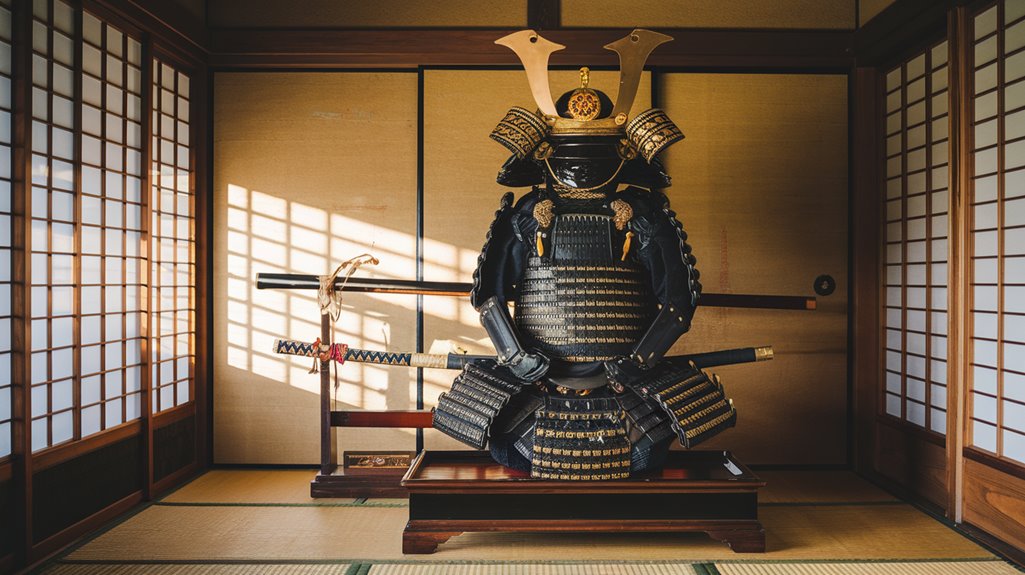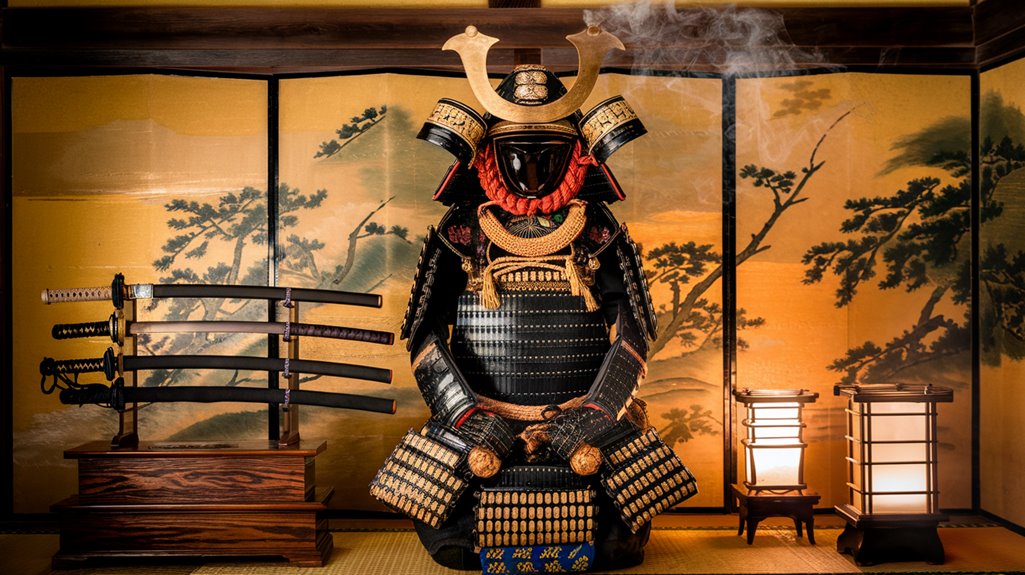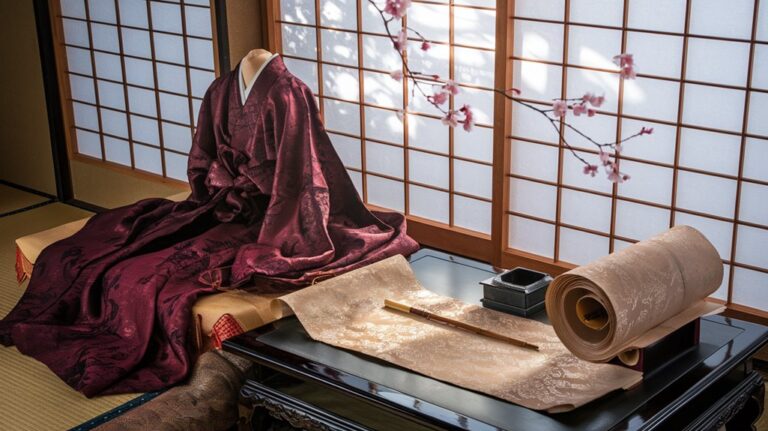The Legendary Black Samurai: Yasuke’s Astonishing Life
While you might think medieval Japan was culturally isolated, the story of Yasuke proves otherwise. As the first and only African samurai in recorded Japanese history, you'll discover how this former slave transformed into one of Japan's most intriguing warriors. From his mysterious origins to his rise as a trusted confidant of Japan's most powerful warlord, Yasuke's journey challenges everything you thought you knew about samurai culture. But his most fascinating revelation still awaits.
From Africa to Japan: The Arrival of a Legend
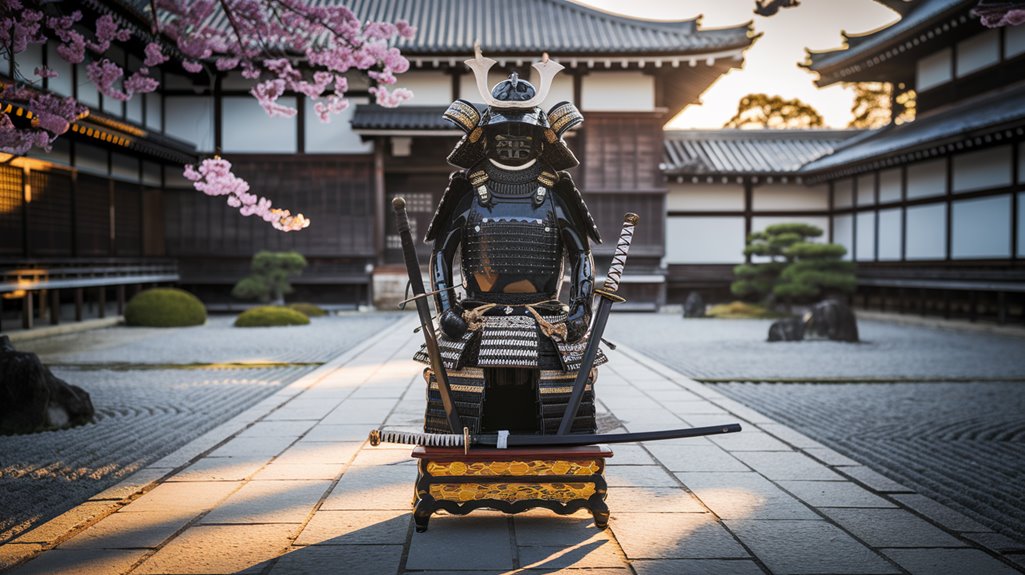
While many details of Yasuke's early life remain shrouded in mystery, historians believe he originated from the Jaang tribe in South Sudan or possibly Mozambique.
After becoming a victim of the slave trade, you'll find his journey took an unexpected turn when Alessandro Valignano, a Jesuit missionary, spotted him in India and made him his bodyguard.
This remarkable cultural exchange began when Yasuke arrived in Japan in 1579.
Standing at 6'2" with dark skin, his presence created such a stir that his first recorded visit to Kyoto in 1581 drew massive crowds, leading to chaos and even some fatalities.
His historical significance was immediately apparent, as many Japanese viewed him as a divine visitor, marking the beginning of an extraordinary chapter in Japanese history. The name Yasuke might have originated from the Hebrew name Issac, according to some historical records.
His fascinating story has been preserved through Jesuit records and continues to captivate readers through various books and media adaptations.
A Historic Meeting With Oda Nobunaga
As destiny would have it, Yasuke's life changed forever when he met the powerful daimyo Oda Nobunaga at Honno-Ji temple in 1581.
After causing a disturbance near the temple, Yasuke found himself face-to-face with the legendary warlord. Nobunaga's skepticism about Yasuke's black skin led to an unusual order – having servants scrub his skin to verify its authenticity.
His towering presence at over six feet tall made him stand out remarkably among the Japanese.
Once convinced, Nobunaga's fascination transformed into genuine appreciation. He immediately welcomed Yasuke into his inner circle, hosting a grand banquet in his honor.
You'll find it remarkable that Yasuke received not just material gifts like a house and servants, but also the prestigious status of samurai. His rapid acceptance into Nobunaga's household was unprecedented, as he frequently dined with the daimyo and his sons, marking a groundbreaking moment in Japanese history. Their relationship grew so close that Jesuit Lourenço Mexia noted Nobunaga's particular fondness for Yasuke.
Rising Through Samurai Ranks
Under Nobunaga's patronage, Yasuke's meteoric rise through the samurai ranks defied convention in 16th-century Japan.
You'll find his cultural integration was remarkably swift – he mastered Japanese customs and language, earning him a coveted position among Nobunaga's elite circle of 30 to 50 trusted warriors.
Within months, you'd have seen Yasuke carrying Nobunaga's sword, dining at his table, and residing in Azuchi Castle – privileges that reflected the shifting samurai dynamics of the era.
His extraordinary strength, reportedly equal to ten men, coupled with his intelligence, secured his position as the first foreign-born samurai.
Nobunaga awarded him a katana and stipend, cementing his status. Before accepting him into service, Nobunaga had servants scrub Yasuke's skin to prove that his dark color wasn't ink.
Originally serving as an attendant to Valignano, Yasuke's path to becoming a samurai began when he first arrived in Japan in 1579.
As a demonstration of his influence, you'll find Yasuke's achievements documented in both Jesuit letters and Japanese chronicles.
Battles and Military Campaigns
Yasuke's battlefield prowess came to light during the final months of Nobunaga's ambitious unification campaign.
You'll find his battle tactics were ruthlessly effective, as he'd often eliminate thousands to achieve peace. His military alliances proved essential in campaigns against formidable enemies like the Takeda and Mori clans. Standing at 1.88 meters tall, Yasuke's imposing physical presence made him a fearsome sight on the battlefield. As Nobunaga's trusted weapon-bearer and bodyguard, he accompanied his lord during critical military inspections.
- Led troops as one of Nobunaga's 30 most trusted warriors
- Fought fierce battles near Mount Fuji against Takeda forces
- Defended Azuchi Castle in northeastern Kyoto
- Stood his ground against 13,000 enemy soldiers at Honnō-ji
- Made a final stand to protect Nobunaga's honor during the temple siege
The Honnō-ji Incident marked Yasuke's most famous battle, where he fought valiantly against Mitsuhide's overwhelming forces.
Though captured, Mitsuhide spared his life, recognizing his warrior spirit and returning him to the Jesuits.
The Fateful Day at Honnō-ji Temple
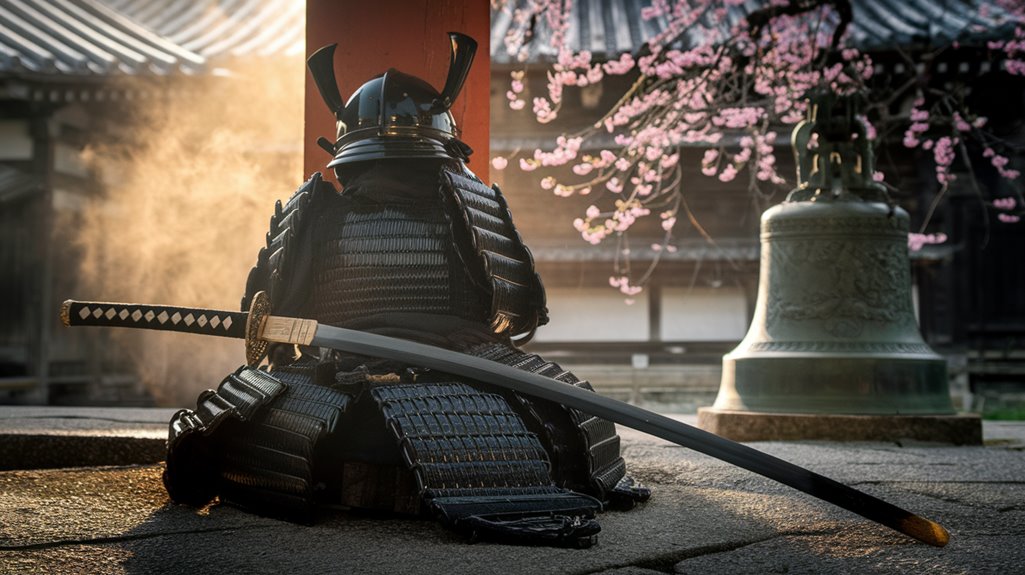
On June 21, 1582, while Oda Nobunaga and his closest warriors rested at Honnō-ji Temple in Kyoto, trusted general Akechi Mitsuhide launched a devastating betrayal.
The Honnō-ji ambush caught Nobunaga's small contingent of just 30 men, including Yasuke, completely off guard against Mitsuhide's 13,000-strong army.
During the chaos, you'd find Yasuke fighting valiantly to protect his lord, but Nobunaga's demise proved inevitable.
As flames engulfed the temple, Nobunaga chose to commit seppuku rather than face capture. The original temple was completely destroyed during this attack.
Later, Nobunaga's loyal son Oda Nobutaka would rebuild the temple in honor of his father.
Yasuke continued fighting alongside Nobunaga's son Nobutada until his capture by Mitsuhide's forces.
 Honnō-ji incident where his master met his end. Before his disappearance, he had served as Nobunaga's trusted weapon bearer and confidant.
Honnō-ji incident where his master met his end. Before his disappearance, he had served as Nobunaga's trusted weapon bearer and confidant.
- His story remained in Japanese memory for nearly 100 years
- Reports exist of similar men in Japan, though none confirmed as Yasuke
- Modern media keeps his legacy alive through games and anime
- His unique status as the first black samurai inspires cultural discussions
- Yasuke's tale raises important questions about historical documentation of black figures

